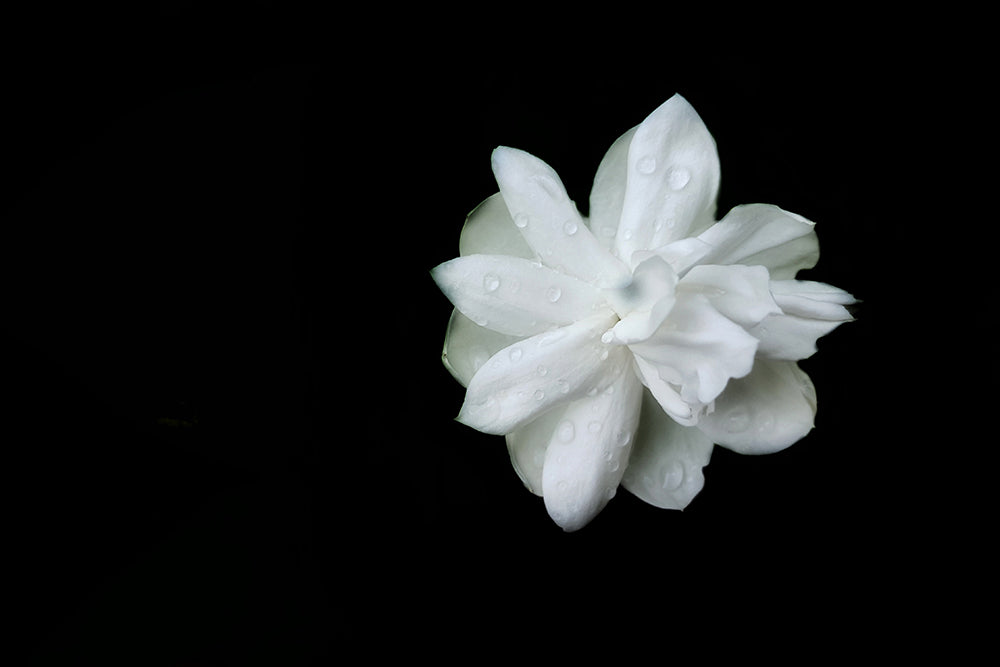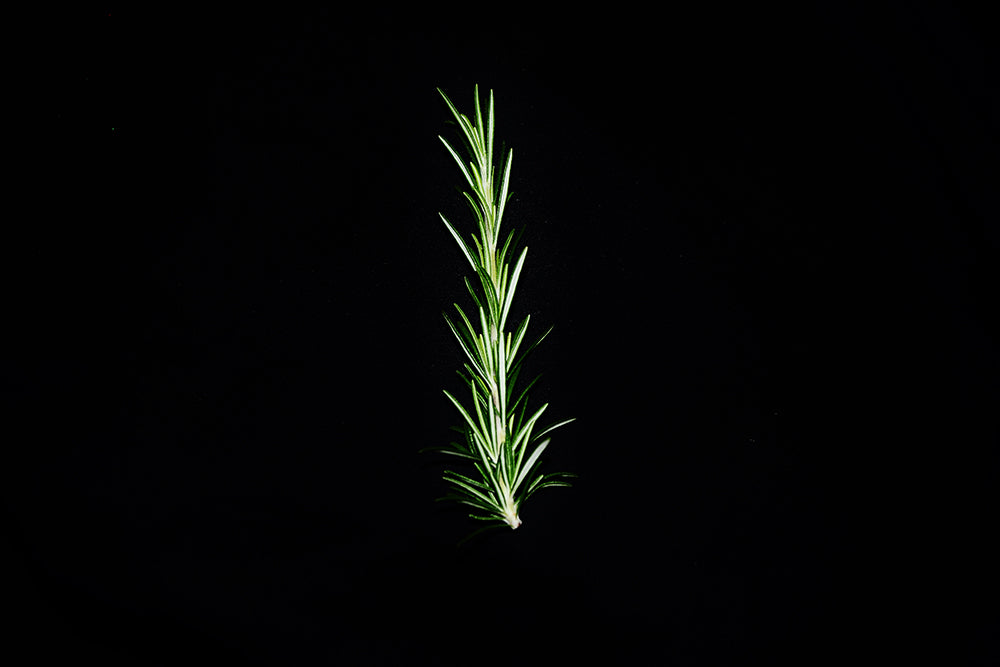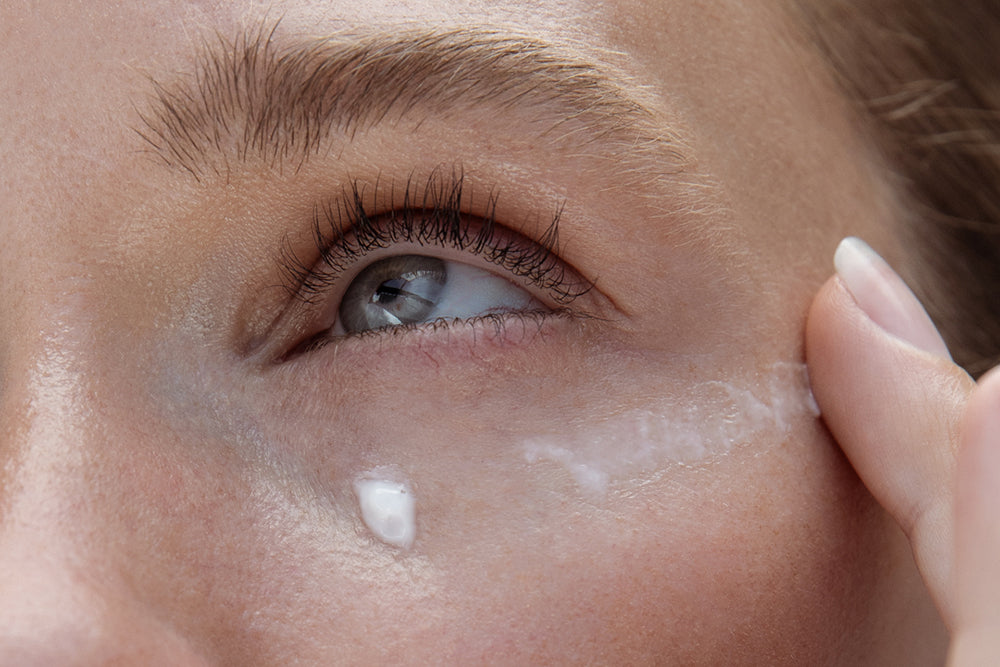
ingredient focus: jasmine

the bottom line
The jasmine flower is one of the most beloved and symbolic flowers found throughout South Asia. Small white or yellow flowers are surrounded by vibrant green leaves and emit an exquisitely sensual aroma. But aside from the traditional and aromatherapeutic benefits, this little flower possesses some seriously antiseptic properties. Read on to learn more about this elegant beauty.
first layer: the history
The word “jasmine” is derived from the Persian word “yasmin”. Sometimes referred to as the “king of oils”, jasmine is a member of the olive family, and thrives in tropical climates. Clusters of white or yellow flowers are surrounded by dark green leaves.
The common white jasmine (Jasminum officinale) is native to Northern India and Persia and was introduced to Europe around the middle of the sixteenth century. India possesses approximately 42 different species of jasmine. Ghazimpur, India is the traditional center of jasmine cultivation in Asia, while in Europe, it is Grasse, France. Jasmin de Grasse has a sweet and fruity scent and is an essential component of Chanel No. 5 parfum. Other sources of jasmine today include Italy, Morocco, and Egypt. Jasminum grandiflorum is currently the most widely used jasmine in perfumery, with a rich and sweet scent. Jasminum sambac is a nightblooming jasmine with a heavier and darker fragrance. Its flowers are used to flavor Chinese tea.
Jasmine plays an extremely important cultural role throughout Asia. In Thailand, jasmine represents motherhood. Jasmine is also the symbolic flower of Damascus, which is called “the city of jasmine”. Jasmine flowers may be found near entrances to temples and in major business areas throughout India, while in South India, jasmine is cultivated in private homes and used in rituals including marriage and religious ceremonies and festivals. The flower has also been used to express emotion and protest; the Tunisian revolution of 2011 was called the “Jasmine Revolution”, and jasmine flowers were used as a symbol of protest during the 2011 Chinese pro-democracy movement.
second layer: the science
Jasmine has played an essential role in perfumery since the time of Cleopatra. Ancient Egyptians reportedly used it to soothe nervous disorders, headaches, and promote sleep. In China, it was traditionally used to improve the scent of sick rooms and clear the air. Jasmine is believed to help balance the body after pregnancy and is used in massage oils to enhance desire and sensuality. Marcel Lavabre has noted that “jasmine releases inhibitions, liberates imagination and develops exhilarating playfulness,” while Patricia Davis writes, “with Jasmine, we are helped to understand that there is no division between physical and divine love.”
Jasmine contains four chemical compounds which are critical to its use in skincare. Phytol helps to reduce inflammation of the skin, while benzyl acetate, an ester, has antiseptic properties when used on wounds. Linalool, a monoterpene ester, possesses antibacterial and antifungal properties. Finally, benzyl alcohol is anti-fungal and can act as a preservative.
third layer: the skin
Jasmine comes in several different forms when used in cosmetic applications. Jasmine absolute essential oil begins with solvent extraction to form a semi-solid mass, which is then treated with alcohol to create an absolute. Steam distillation is finally used to obtain the essential oil. Jasmine essential oil has been used to improve the elasticity of skin. Jasmine extract is a water-soluble extraction of flowers and leaves. It is used to soothe, moisturize, and condition the skin. Jamsine hydrosol is a flower water which is typically used in toners, creams, and lotions to soothe and condition the skin. Last, jasmine flower wax is a by-product derived from the extraction of jasmine absolute. It is used both to condition skin, as well as for its intensely concentrated aroma. Jasmine has been a key ingredient in lotions and creams to help reduce dryness and inflammation.
Recently, jasmonates, plant-derived hormones from linoleic acid which were originally isolated from jasmine, have been studied for their ability reduce wrinkles, improve skin texture, and reduce the appearance of large pores.
fourth layer: how we do it
We use an organic absolute of Jasminum grandiflorum in our best-selling jasmine serum. our hydrating serum combines jasmine absolute, sweet almond oil and sandalwood for a fresh, dewy glow. hyaluronic acid helps to lock moisture in the skin and prevent water loss while panthenol (vitamin B5) deeply penetrates to help nourish and moisturize skin.
All this and more at www.anokhaskincare.com .
Add a layer by joining our newsletter: https://bit.ly/anokha_layers
xx
anokha
references:
- wikipedia.org
- formulabotanica.com
- edenbotanicals.com
- Rhind JP. Aromatherapeutic Blending. (2016). London: Singing Dragon.
- Rhind JP. Essential Oils: A Handbook for Aromatherapy Practice. (2012). London: Singing Dragon.
- Damian P, Damian K. Aromatherapy: Scent & Psyche. (1995). Rochester: Inner Traditions International, Ltd.
- Fischer-Rizzi S. Complete Aromatherapy Handbook. (1990). New York: Sterling.
- Miller L, Miller B. Ayurveda & Aromatherapy. The Earth Essential Guide to Ancient Wisdom and Modern Healing. (1995). Twin Lakes: Lotus Press.
- http://ayalasmellyblog.blogspot.com/search?q=jasmine
- http://perfumeshrine.blogspot.com/2007/05/jasmine-series-part-2-role-of-jasmine.html
- https://boisdejasmin.com/2005/05/jasmine-perfume-note-and-material.html
- Tisserand R, Young R. Essential Oil Safety, 2nd ed. (2014). Edinburgh: Elsevier.
- Glavac NK, Janes D. Modern Cosmetics: Ingredients of Natural Origin, volume 1. (2018). Velenje: Sirimo dobro besedo.
- Alexiades M. Jasmonates and Tetrahydrojasmonic Acid: A Novel Class of Anti-Aging Molecules. J Drugs Dermatol 2016; 15(2): 206-207.



leave us a comment
This site is protected by hCaptcha and the hCaptcha Privacy Policy and Terms of Service apply.